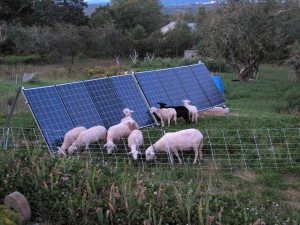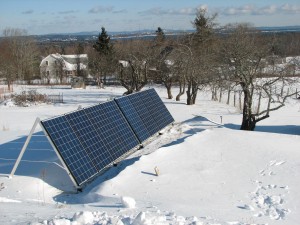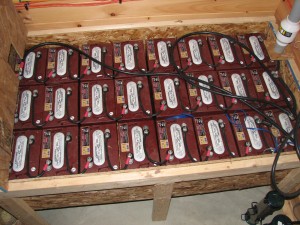« The Age of Modernity and its Discontents | Home | The Industrial Economy is Ending Forever: an Energy Explanation for Agriculturists and Everyone »
Wind and solar – societal and residential
By Karl North | March 15, 2019
I hasten to preface these brief results of my experiments with a residential solar electric system by stating that in accord with what I think is a rising consensus, in my view these energy sources will never significantly replace fossil energy consumption at a societal level. Hence, as fossil energy depletion continues, becoming ever scarcer, the industrial society that depends on it will disappear. My supporting arguments made in 2013 are still mostly valid. To summarize: societal solar and wind build-out will continue but eventually stall out due to increasing headwinds, two of which are inevitable and a third most likely. The first two are driven by declining net energy: 1) a shrinking industrial economy, further compromised by the diversion of resources that any serious attempt at ‘renewables’ will cause. 2) rising scarcity of raw materials compounded by depletion of the best quality sources. The third headwind is declining political will to make the economic sacrifice to pay for a large scale conversion, and to drastically reduce energy consumption in an economy where the standard of living is already dropping for most people.
Hence my solar system is designed simply to replace the grid whenever it fails, not to model a future societal energy source. It is sized to run essential appliances (water pump, two freezers, fridge, sparing use of lights and electronics) for a time whenever the grid fails. But Even sized for emergencies the $12k kit and installation it is too costly for most people. So yes, we are seeing a lot of this among those who can afford it, but less as the economy shrinks. Most of those who can afford residential solar electricity make the mistake of claiming that because they can afford it, society can afford to convert everyone to it.
Unlike grid-tied systems, off-grid systems do not save owners any money unless they can benefit from heavy subsidies. The up-front investment, maintenance and replacement of parts (battery banks have a ten year life at best) eats up all the savings. And grid tied systems cheat other rate payers by not paying their share of transmission costs. Promoters of a solar electric future for all of society are cherry-picking the data and ignoring full cost accounting.
My system is 8 standard panels facing south, angled at 60 degrees, in downeast Maine at 45N latitude; solar charger; inverter/charger; 48V bank of 24 6V batteries; propane generator. It is set up to run the house off the battery bank inverted to normal line voltage, and to charge the bank mostly from the panels whenever possible, and to shift to charging from the grid as needed to maintain battery voltage. In case of grid failure it allows manual shift to generator charging. Unlike most generator uses in case of grid failure, in this system it does not run all the time. Once a day it recharges the battery bank in less than an hour.
Results: It provides for as much as 90% of house consumption in summer, as little as 50% in winter. Part of that is due to seasonal variation in house consumption, part of it to seasonal variation in solar gain. Actual peaks in solar power production occur in spring and fall in this system, producing as much as 11kwh per day. The house is passive solar (Three Farmhouses: A Study in Passive Solar Design): 100% of residential heat and hot water come from sun and wood. We use no high consumption appliances. So our total electric power consumption is relatively low: 10-15 kwh/day depending on the season.
The sheep barn and shop run directly off the grid. The 1500W electric heater to keep the sheep water trough from freezing consumes a big chunk of our total power consumption in winter.
Topics: Social Futures, Peak Oil, Relocalization, Uncategorized | No Comments »




